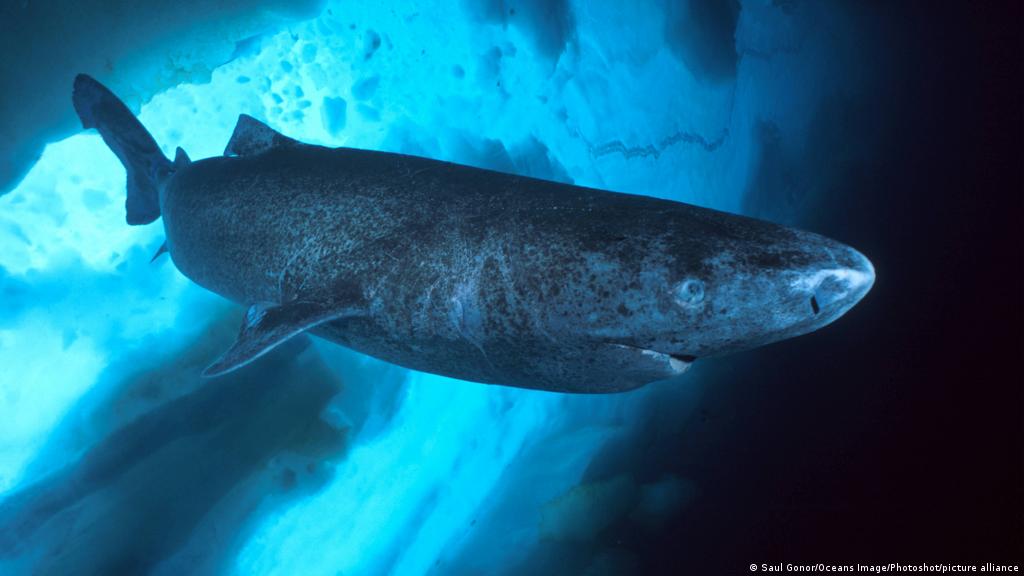The Greenland shark is no exception to the rule that most sharks’ lives are still mostly unknown, but what we’ve just learnt is astounding. Since a parasite started attaching itself to their corneas a few decades ago, scientists have learned that these ancient Arctic mammals can live up to 400 years and are frequently blind. Although their primary diet consists of fish and squid, they have also been observed scavenging animal carcasses, including those of horses, reindeer, and even polar bears.
The most recent surprise occurred in spring 2022 when researchers discovered a Greenland shark thousands of miles outside of its recognised habitat in the western Caribbean. Even though researchers have come to expect the unusual with these sharks, the sighting nonetheless caught them off guard.
Devanshi Kasana, a doctorate candidate at Florida International University, and a group of Belizean fisherman accidentally caught the shark while on a tiger-shark tagging excursion. “It was both surprising and exhilarating,” Kasana says. Their discovery was published in the journal Marine Biology in July. Shark experts have concluded that the animal was probably a Greenland shark based on images of it, despite Kasana’s inability to obtain a DNA sample to confirm the shark’s identity. This unusual encounter casts doubt on the Greenland shark’s true range, which was previously thought to be limited to the frigid seas of the North Atlantic Ocean.
Unexpected sighting
The sighting took place close to the second-longest barrier reef in the world, off the southern coast of Belize. In the deep waters off Glover’s Reef, an atoll that is partially underwater, Kasana had cast a longline. Her objective was to capture and tag tiger sharks so she could observe their ecology and activity. The crew had been considering giving up because of the challenging conditions on the day of the sighting. They then went to retrieve their reel, though.
Hector Martinez, a fisherman who assists Kasana in her study, adds, “We instantly sensed there was something heavy on the rope.” The line’s hydraulic reel was working hard to bring its catch to the surface. Two hours of conflict culminated in the shark came into view.
Kasana and the team weren’t initially sure what they were seeing. Even with our combined years of fishing knowledge, she claims, “we didn’t recognise what species it was until that individual came to the top.” She speculated that it might be a six-gill shark, which can be found worldwide in deep ocean conditions. She submitted a photo of the shark to Demian Chapman, her Ph.D. advisor and the director of Florida’s Mote Marine Laboratory & Aquarium, who responded that it wasn’t a six-gill. He said it was probably a Greenland shark.
Away from home?
These large-bodied sharks can grow to a length of 23 feet and a weight of 1.5 tonnes. Greenland sharks are mostly scavengers and will eat the remains of large mammals that find their way to the seafloor, despite the fact that they have been found to hunt seals, fish, and squid.
Greenland sharks have lately been designated the world’s longest-living animal by scientists. They can live up to 400 years, according to scientists, and in 2016 a 272-year-old specimen was discovered off the coast of Greenland. By radiocarbon dating the tissue at the centre of their eyes, which is made up of proteins created when the shark was first born, scientists can ascertain its age.
Greenland sharks are a subspecies of sleeper sharks, which are evolved to live in cold water. They move slowly in order to preserve energy, and their tissues are highly concentrated with chemicals that are akin to antifreeze and prevent the formation of ice crystals. They can survive in even the harshest Arctic seas thanks to these adaptations. It was so unexpected to see one in Belize, despite the fact that sleeper sharks have occasionally been seen close to the equator. An official report of a Greenland shark sighting in the tropics is “extremely useful,” according to Brynn Devine, an Arctic fisheries specialist with the environmental non-profit Oceans North.
“Our understanding of their dispersal farther from the poles is relatively limited. Through observations like these, we are discovering more information about these sharks, but there are still some significant knowledge gaps, according to Devine.
The Caribbean’s deep sea, albeit far from the Arctic, is still exceedingly cold—and, it would seem, more than suited for these species. The possibility exists, according to Kasana, that sleeper sharks, including Greenland sharks, may live in deep waters all over the world. But these kinds of sightings are uncommon. According to shark biologist and Sharks of the World author Dave Ebert, “We don’t know a lot about the deep oceans in the Caribbean.” We might not have realised that the shark was present if this student hadn’t been able to capture a photo of it. Kasana is happy that she was able to record the presence of the shark in the area, even though the shark she and her team caught that day wasn’t the one she was hunting.
Glover’s Reef and the surrounding deep seas are among the three atolls that the Belizean government recently designated as shark protected areas. The discovery will “assist in safeguarding whatever undiscovered critters inhabit the waters of Glover’s,” Kasana adds, adding that she and her team are “very excited” to have made it.









